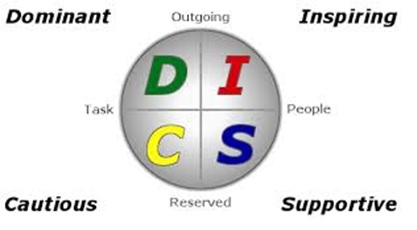
If you’re a high D, here’s how you relate to each of the styles:
…to another high D:
People with the D style like to get right to the point. They want things to happen quickly and don’t want to spend a lot of time dwelling on specifics. Because both of you tend to be straightforward, you may try to clear the air and get things moving. But since you share a strong-willed and competitive nature, you may overwhelm each other’s ideas with your own opinions. As a result, neither of you may listen to what the other has to say. Each and every person has a sacred point of view and deserves to be heard and understood.
Strategies:
- Focus on dialogue rather than talking over each other.
- Don’t push back too forcefully if they get assertive.
- Give them time to present their case without interrupting before offering your own ideas.
- When solving problems, don’t be so insistent on your own solutions that you dismiss the merit of their ideas.
- Remember that the goal is to solve problems, not to win as an individual.
- Be willing to compromise at times.
- If things get tense, address the situation directly but avoid becoming overly insistent or aggressive.
- Focus on resolving the issue rather than on winning.
- Resist the urge to escalate the conflict.
…to a high i:
People with the ‘I’ want to collaborate on fun or exciting projects. They probably don’t share your focus on bottom-line results. Therefore, they may want to spend time being sociable, while you just want to get down to business. While you may have little patience for their efforts to build team spirit, they might find your frank and forceful approach to be pushy or insensitive.
- When trying to connect, find ways to recognize them so they feel well-liked and appreciated.
- Avoid dampening their enthusiasm.
- Be willing to engage in friendly small talk before launching into the business at hand.
- When solving problems, avoid insisting on tough-minded solutions that might alienate others.
- Use your shared energy to maintain momentum.
- Show that you understand the value of taking relationships into account.
- When things get tense, be careful that your directness doesn’t come across as a personal attack.
- Express a desire to work through the conflict quickly but thoroughly.
- Let them know that a disagreement now doesn’t mean a poor relationship down the road.
…with the S style:
People with S style value cooperation and friendly interaction. You’re probably less concerned with personal connections than they are, and they may see your matter-of-fact approach as callous at times. Your tendency to be straightforward may overwhelm them, and your sometimes, aggressive manner may discourage them from offering their opinions and collaborating with you.
- When trying to connect, provide a safe environment so they feel comfortable speaking up when something is bothering them.
- Show concern for their feelings rather than just pushing for results.
- Be proactive in seeking their ideas and opinions.
- When problems need to be solved, respect their cautious pace, but work together to make decisions more efficiently.
- Consider establishing a mutually agreed-upon deadline rather than pushing them to act.
- Acknowledge their desire to work together and consider other people’s feelings when making decisions.
- When things get tense, take a more diplomatic approach, and focus on uncovering the true source of the conflict.
- Avoid forceful tactics that may leave them feeling anxious or resentful.
- Don’t interpret their silence as a resolution to conflict, as they may be hiding bitterness.
…with a C:
People with the C style would often rather focus on facts than feelings, and this might affect the way you relate to one another. They probably appreciate your tendency to concentrate on the task at hand. However, they like to carefully analyze ideas, while you’re more likely to want things to happen quickly. As a result, they may find your more forceful approach to be too pushy and reckless, and you might think their tendency to be systematic delays forward progress.
- When trying to connect, talk to them about the objective, fact-based aspects of ideas and projects.
- Avoid pressuring them for immediate action.
- Give them time to analyze their options.
- When problems need to be solved, respect their need to consider all the options, and remember that this may lead to solutions that have a bigger impact on the bottom line.
- Show appreciation for their logical viewpoint by backing up your arguments with evidence.
- Find ways to balance your sense of urgency with their caution
- When things get tense, tone down your sometimes, aggressive approach to avoid making them defensive.
- State your position objectively and give them time to present their side.
- Support your opinions with logic and facts, and avoid pushing them to settle the matter immediately.
Prompts/Pre-frames to use with a High D personality style:
“I know you are busy and have a lot on your mind, I am wondering if you have two minutes to look at…”
“I am getting back to you about “project X”, and have two options for you to review and decide which is best…”
“I understand your communication style is direct, however, right now, this conversation is feeling (aggressive, or, not safe, or, uncomfortable), and I would like to continue at another time.”
“Sometimes when we communicate the energy I feel from you is (aggressive, or overpowering) and makes me feel uncomfortable. What is the best way for me to share that with you when that occurs?”
“I know your processing style is fast and external, mine is slow and internal, can we continue this discussion at another time, once I have had time to process and think?”
“I know you are good at solving challenges/problems, when are you available to discuss a situation I am dealing with?”
“I know you like to get things done and get them done quickly, this particular project will take some processing time to get it done correctly, can we slow down just a bit?”
Excerpted (direct and paraphrased) from Everything DiSC reports from John Wiley & Sons, Inc, © 2012.


